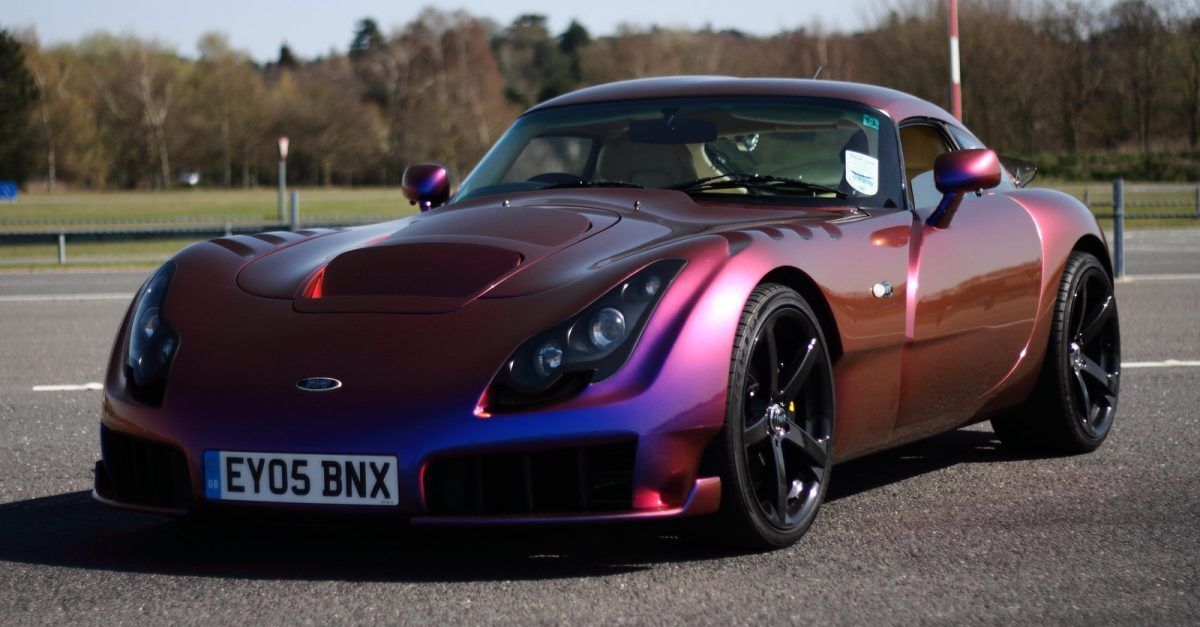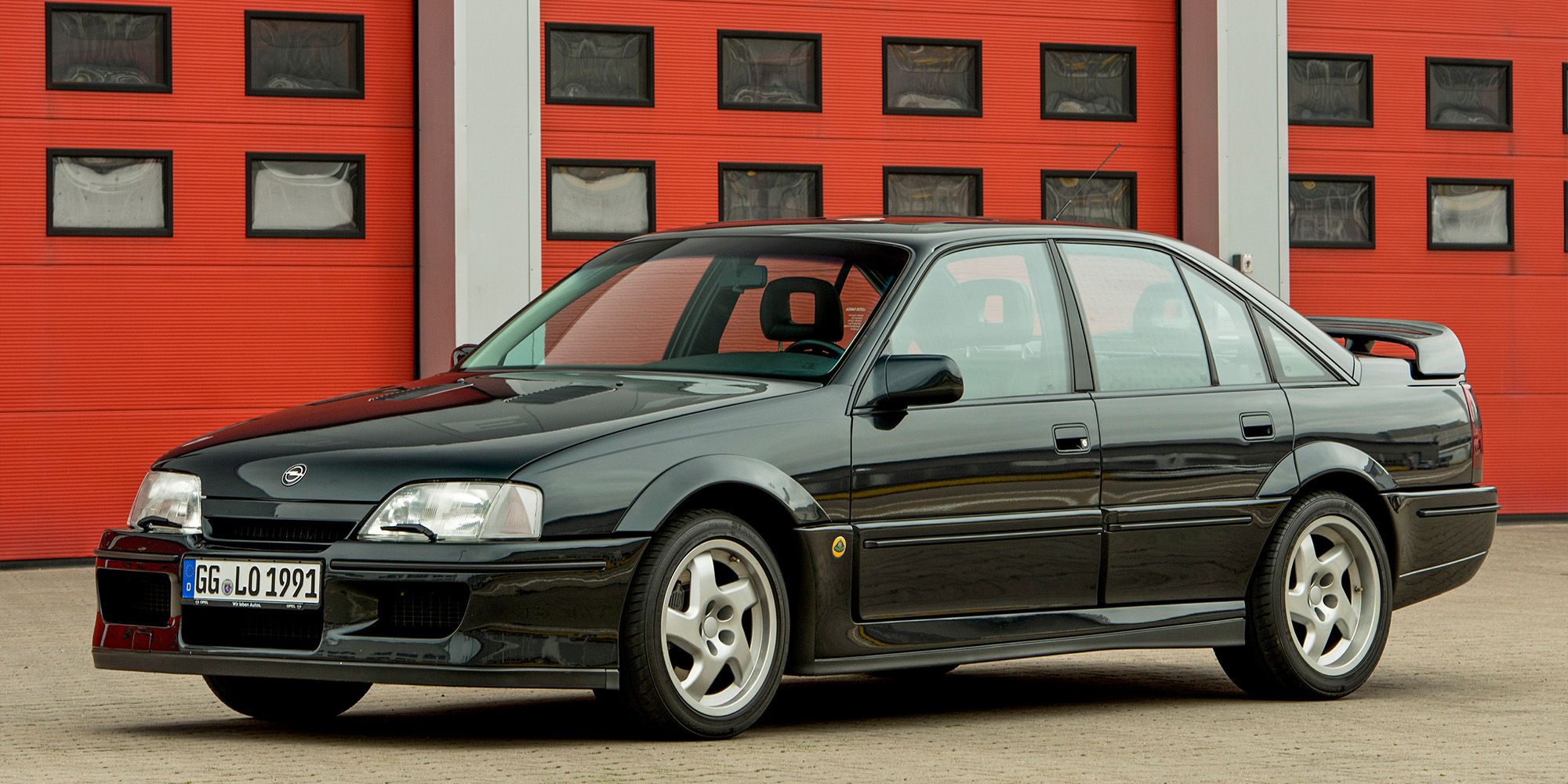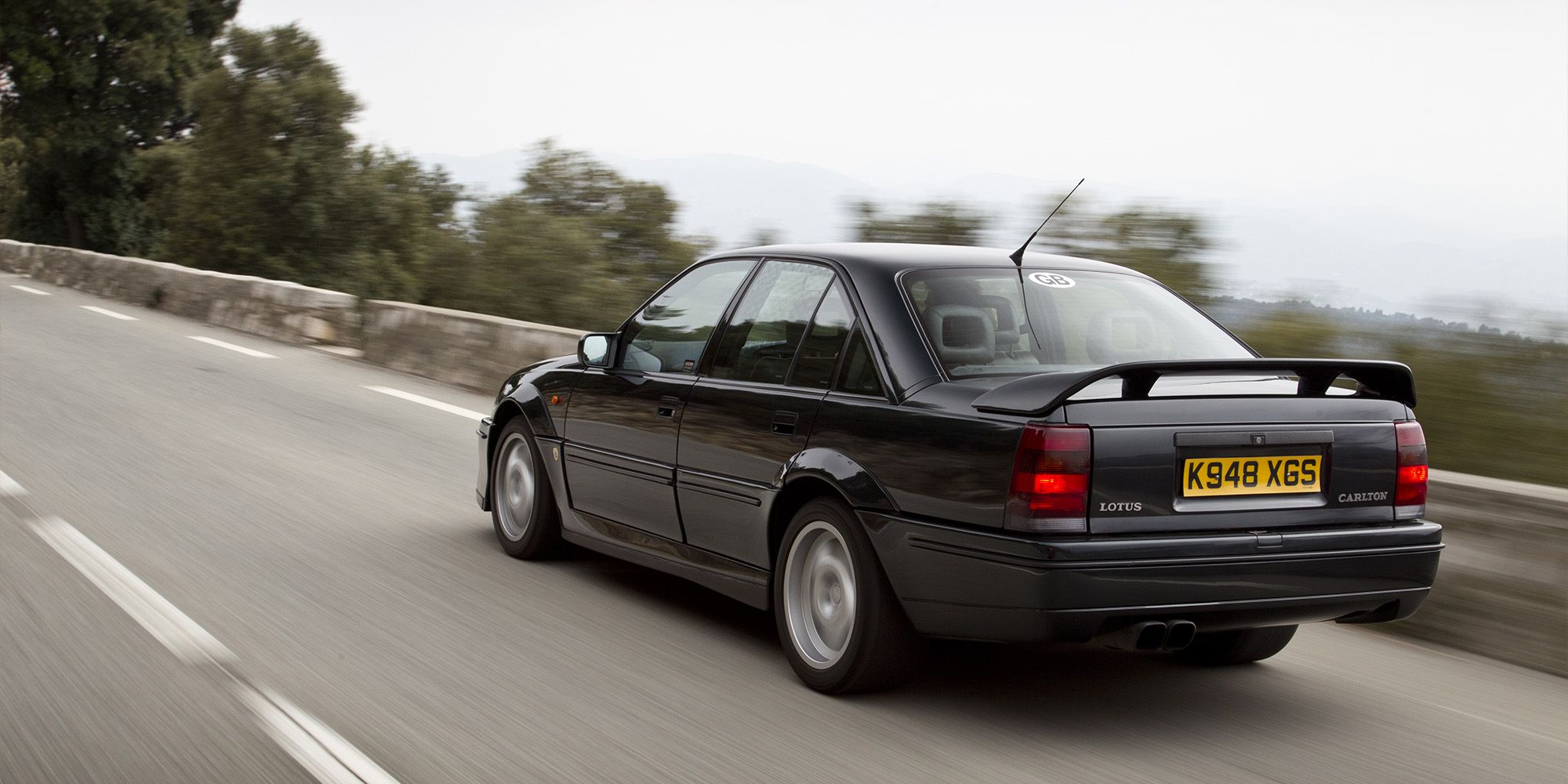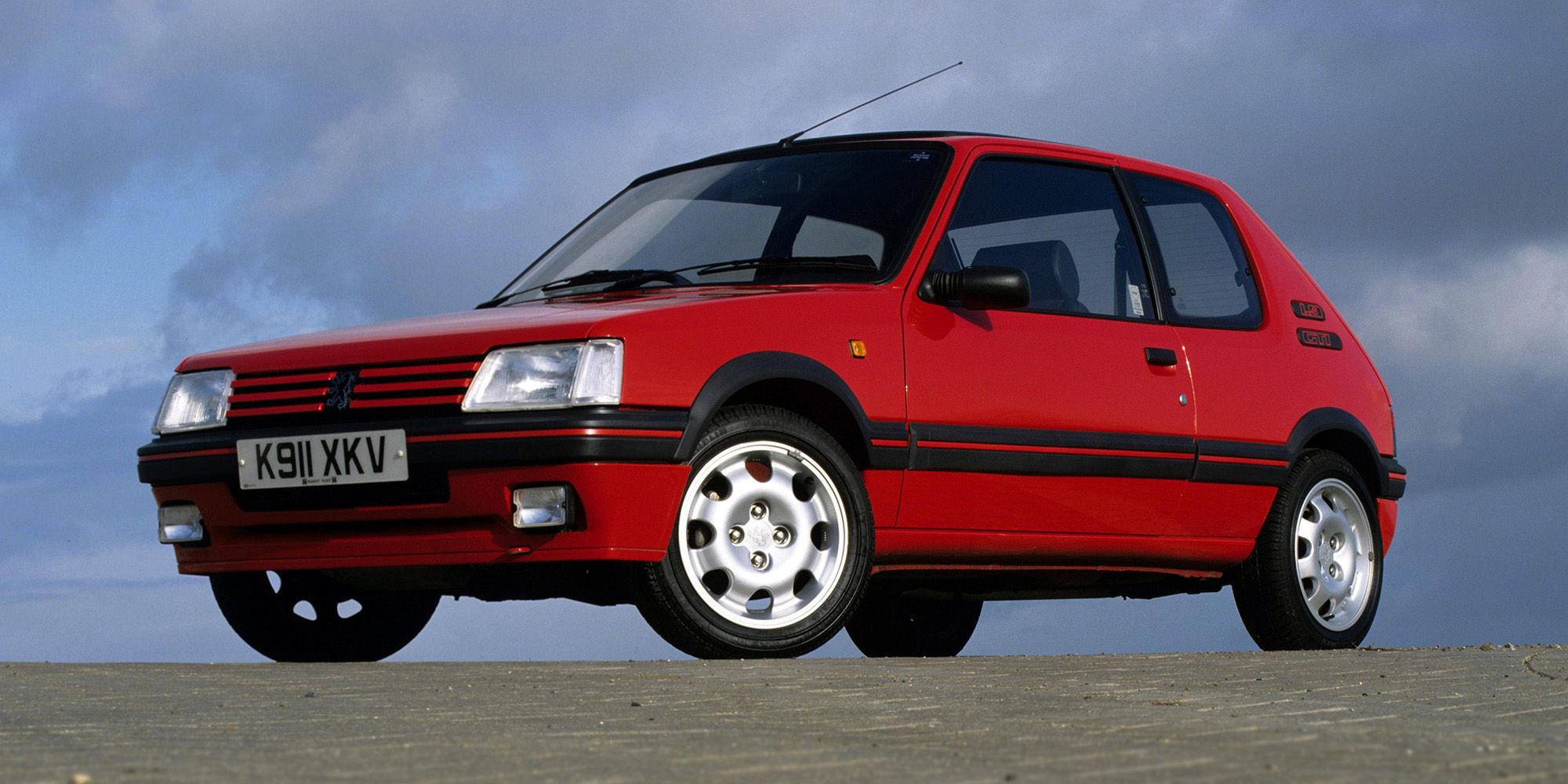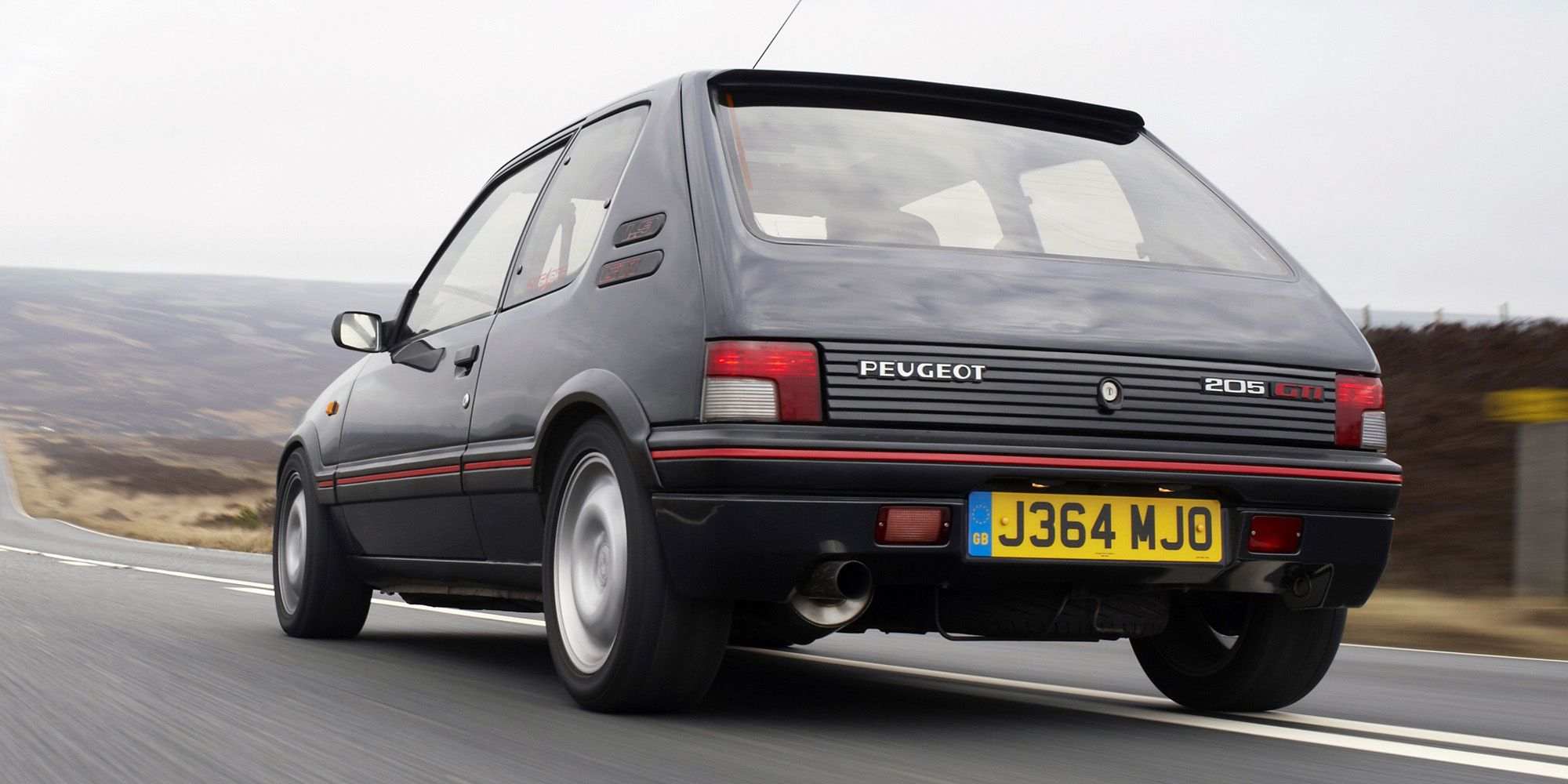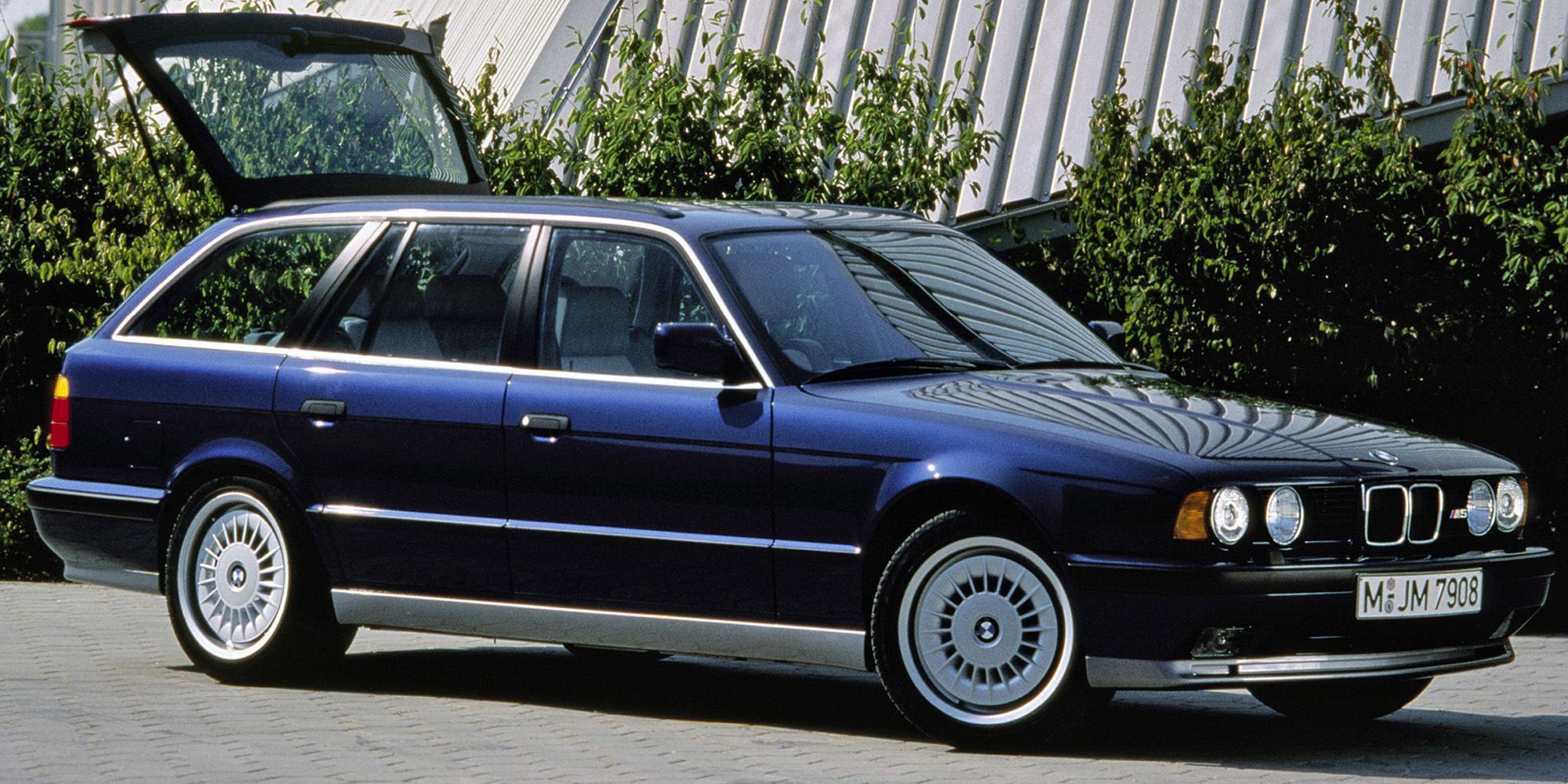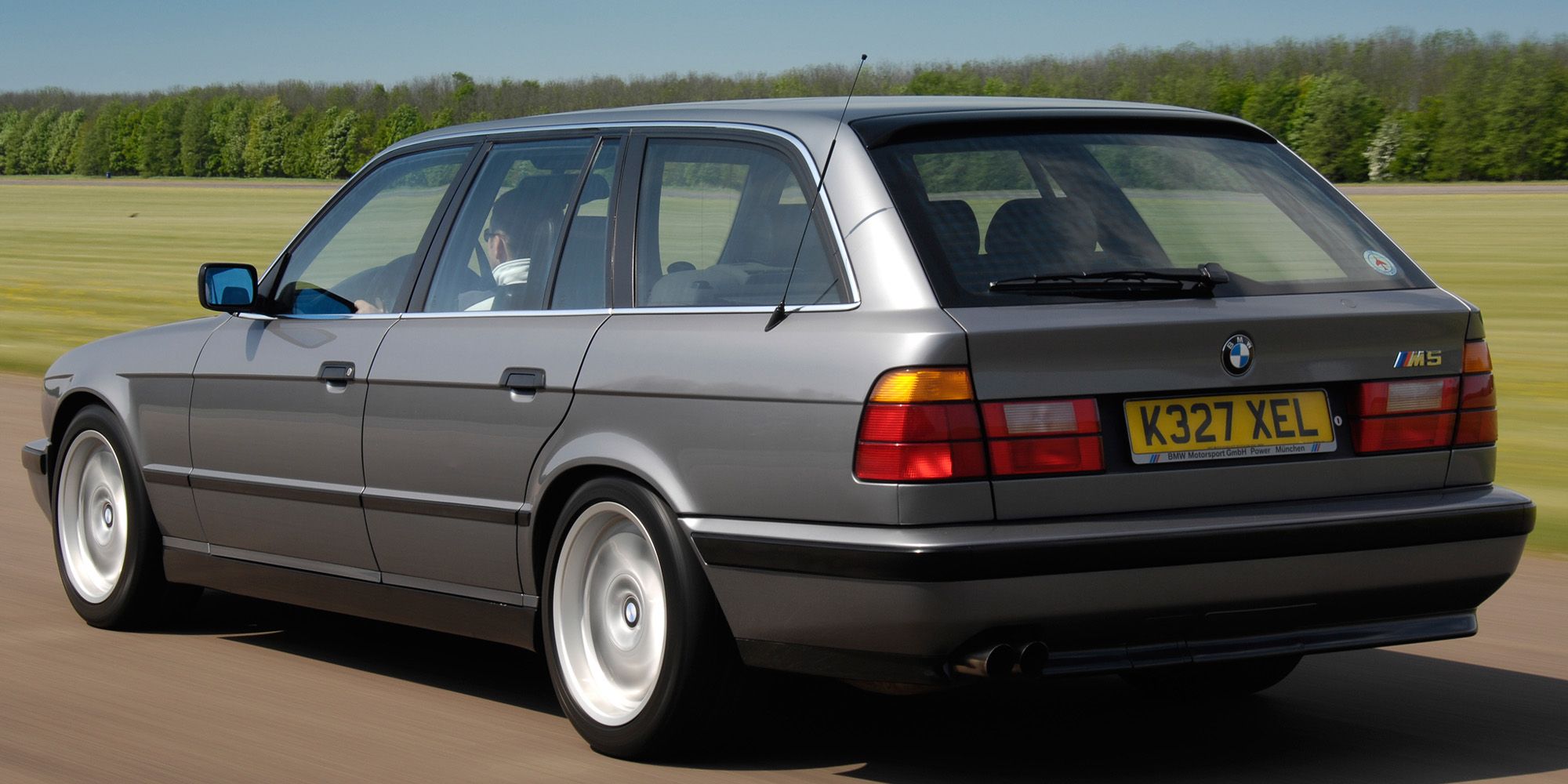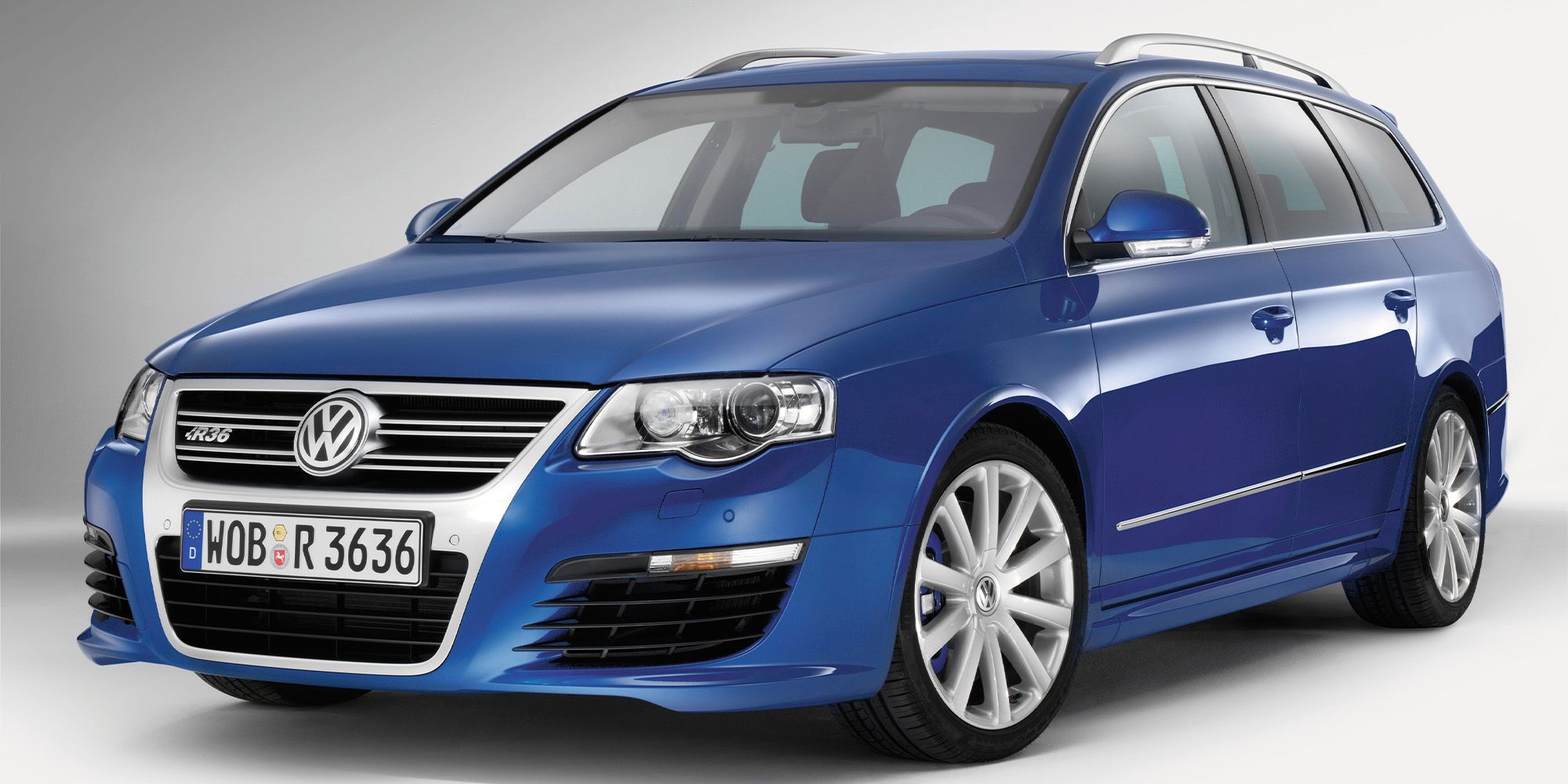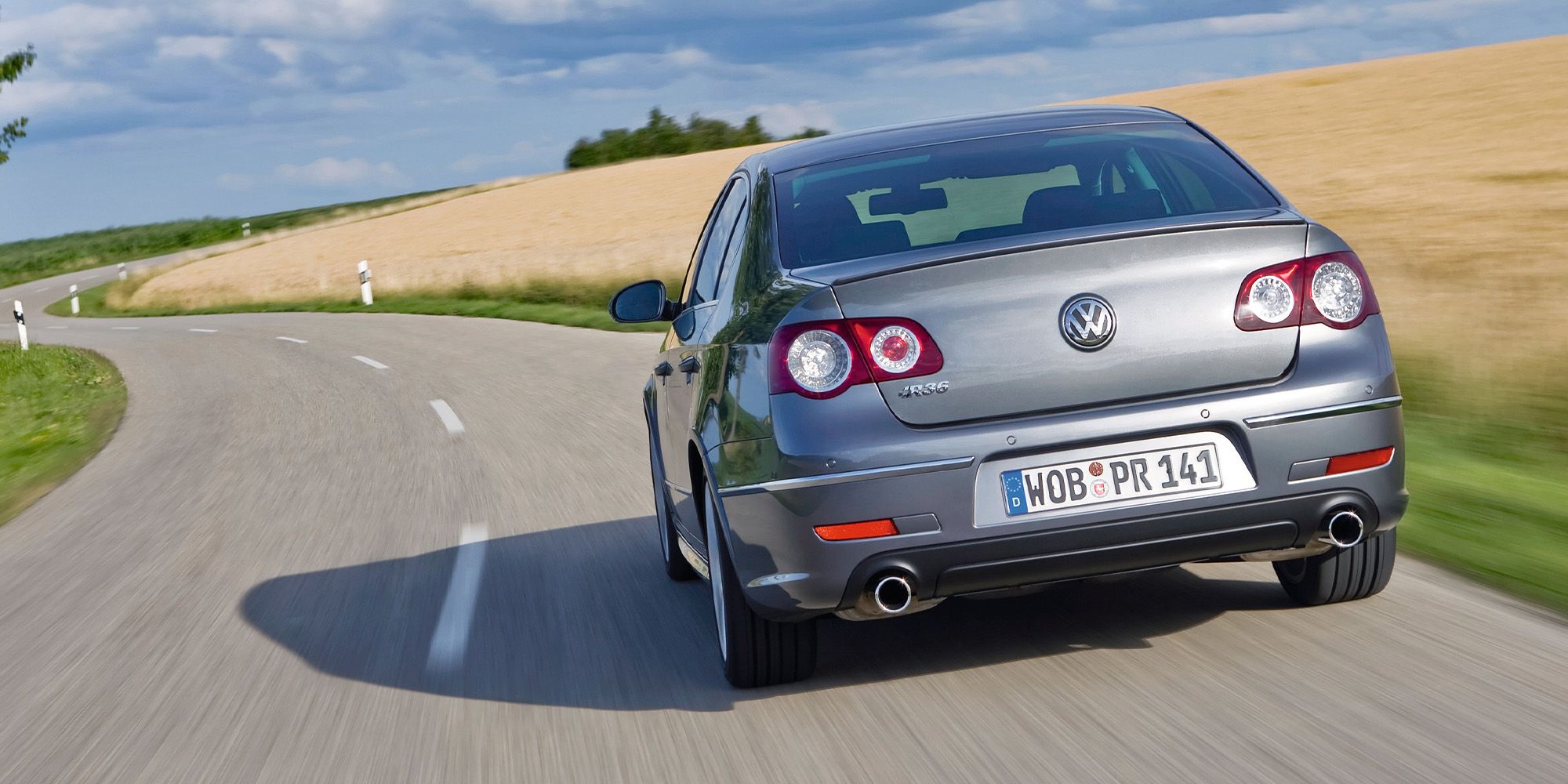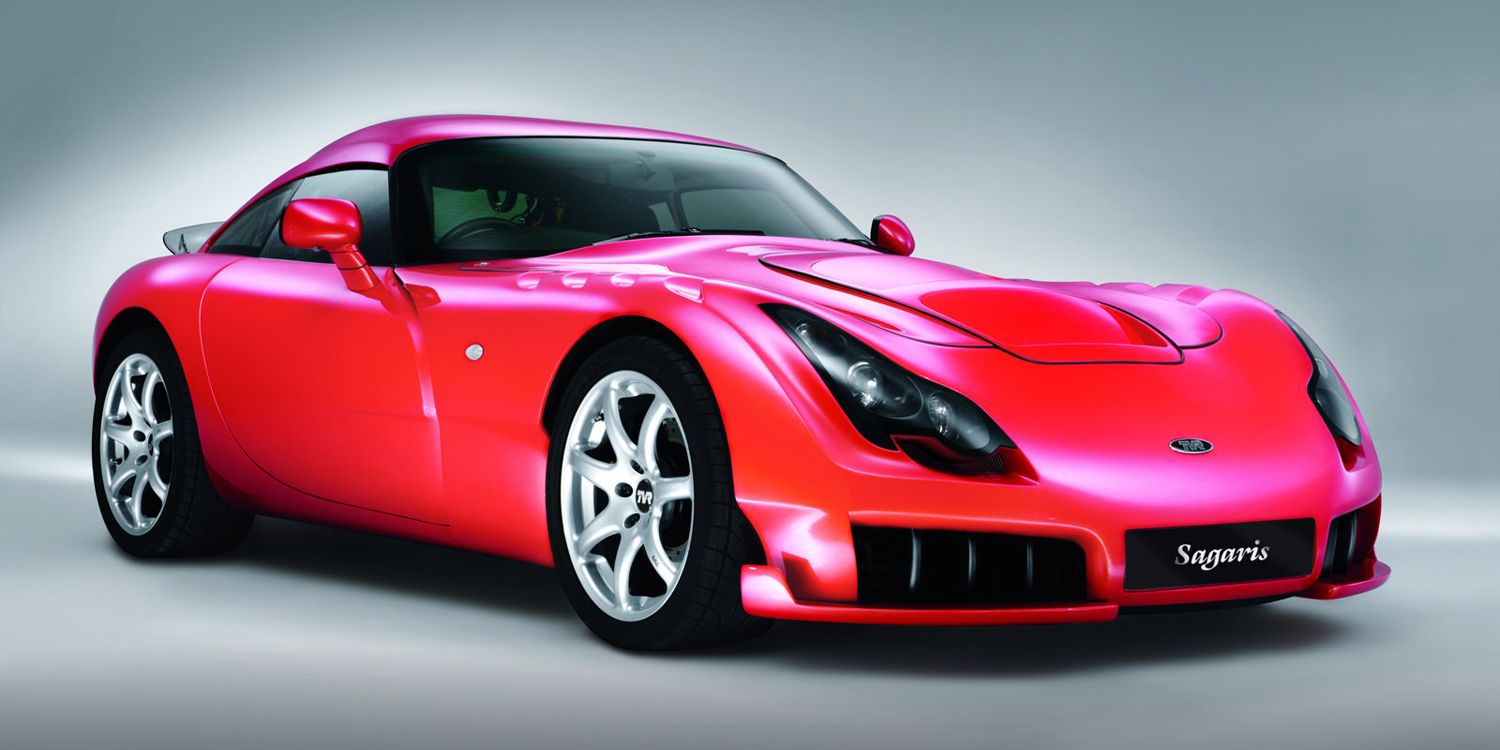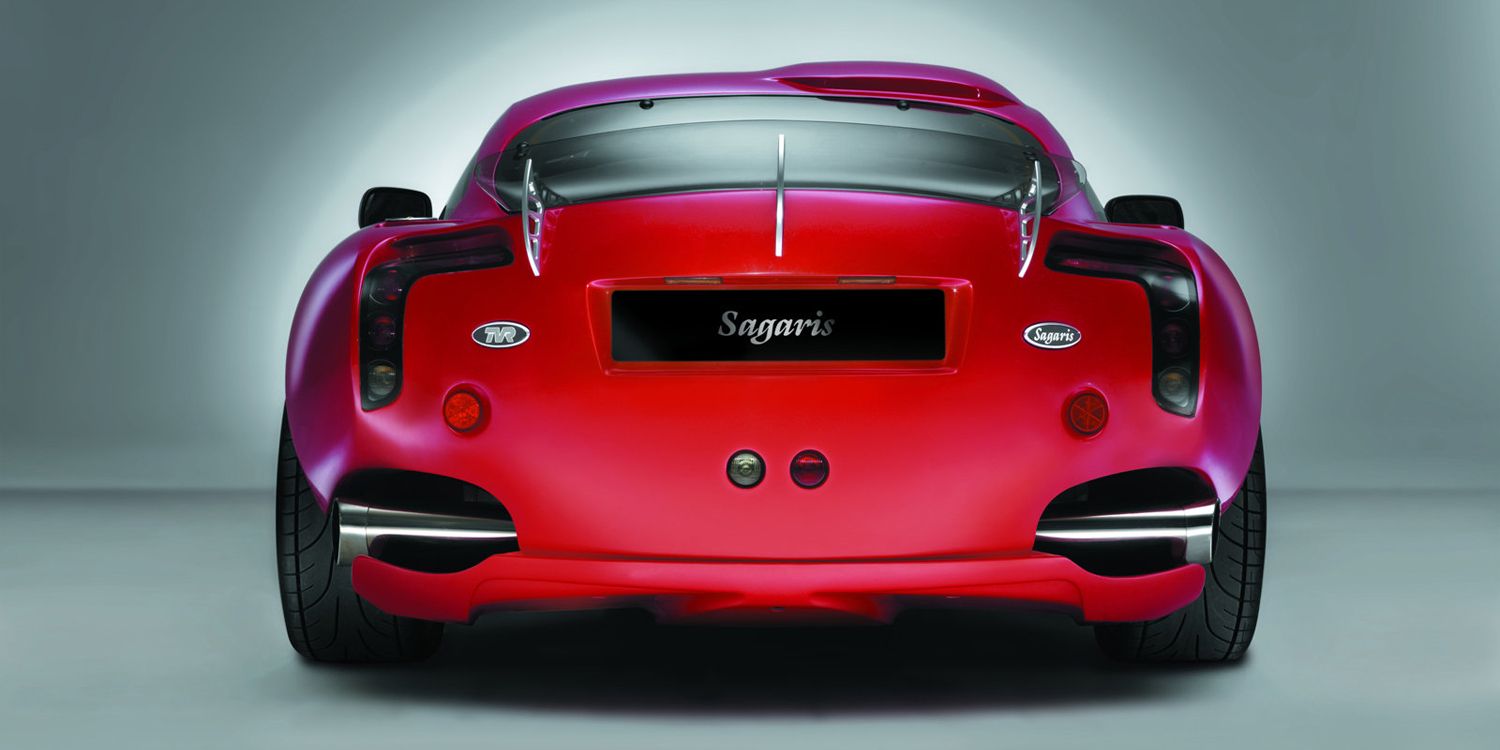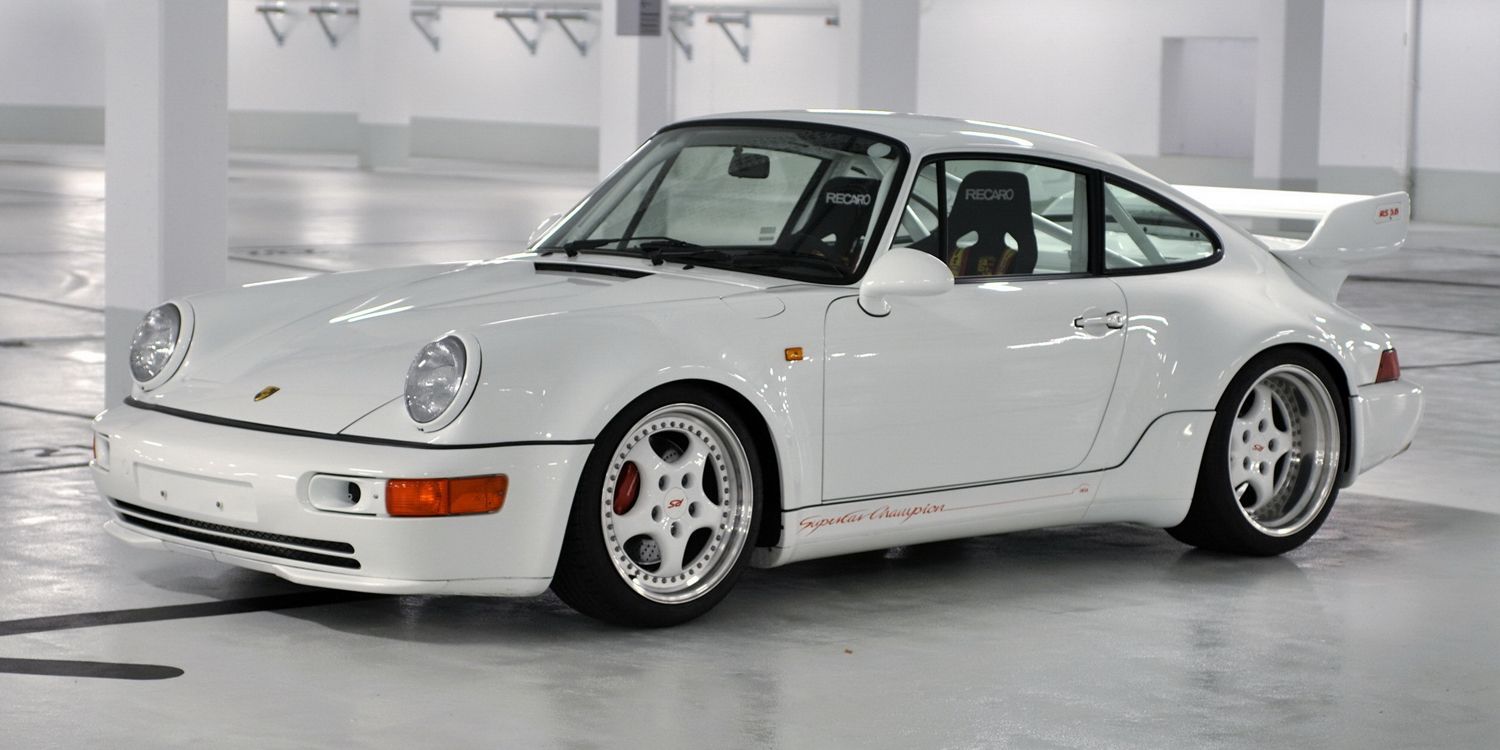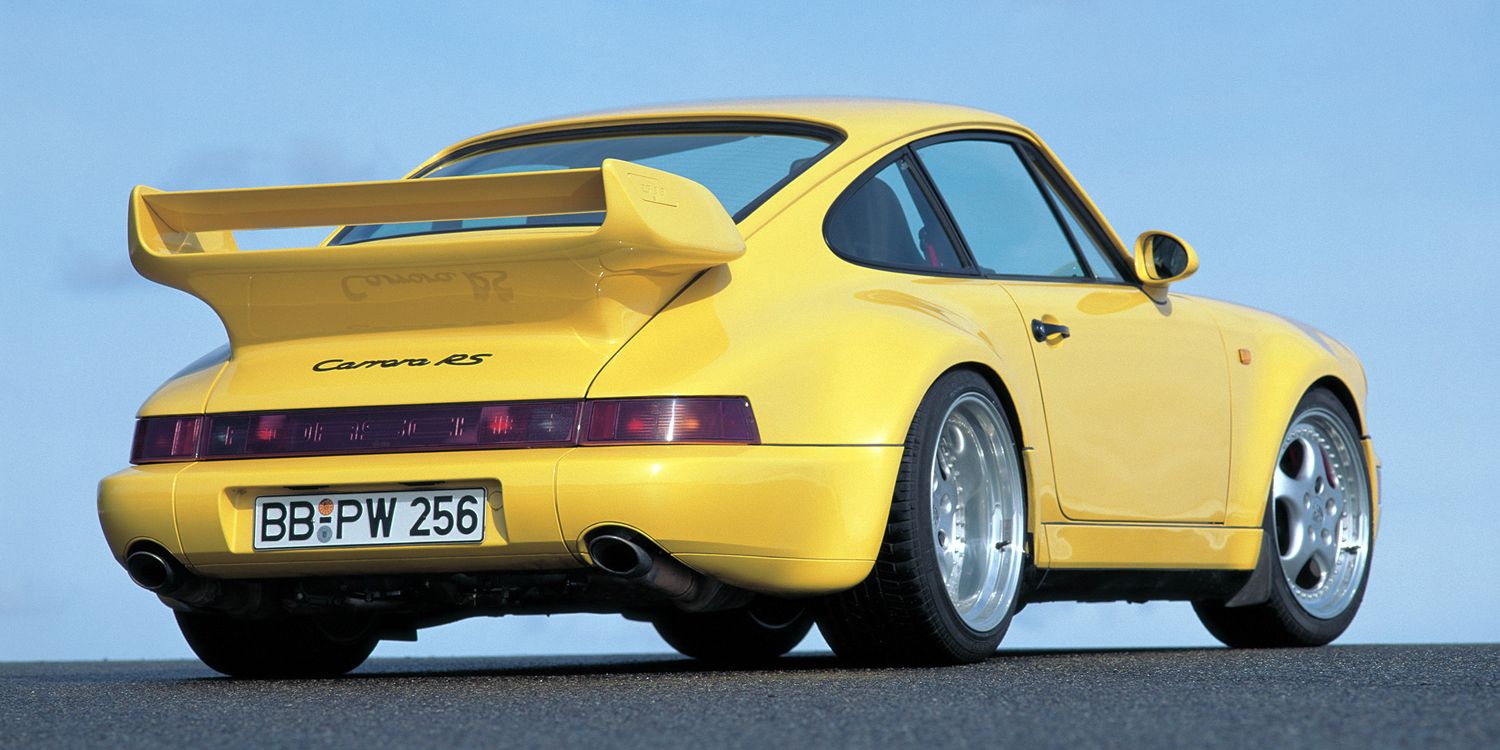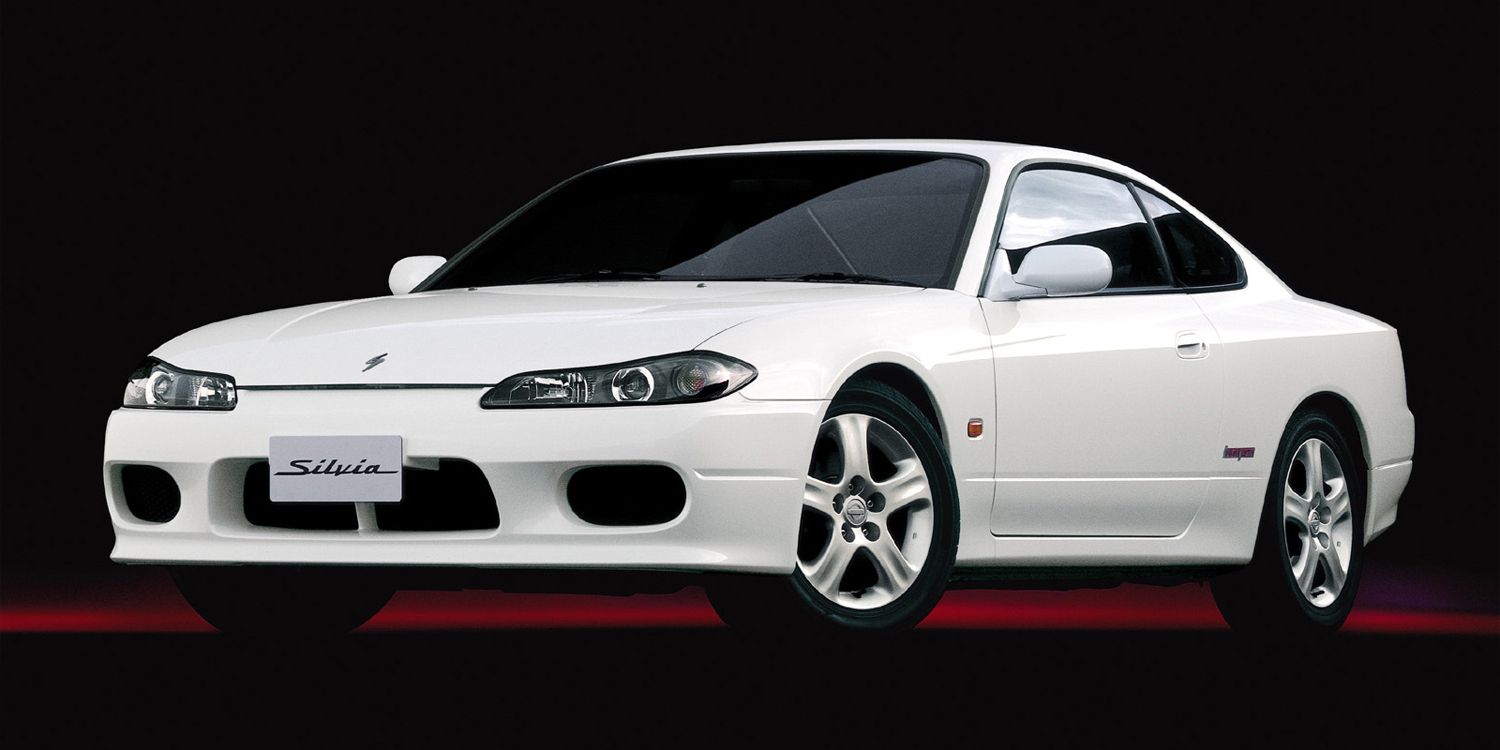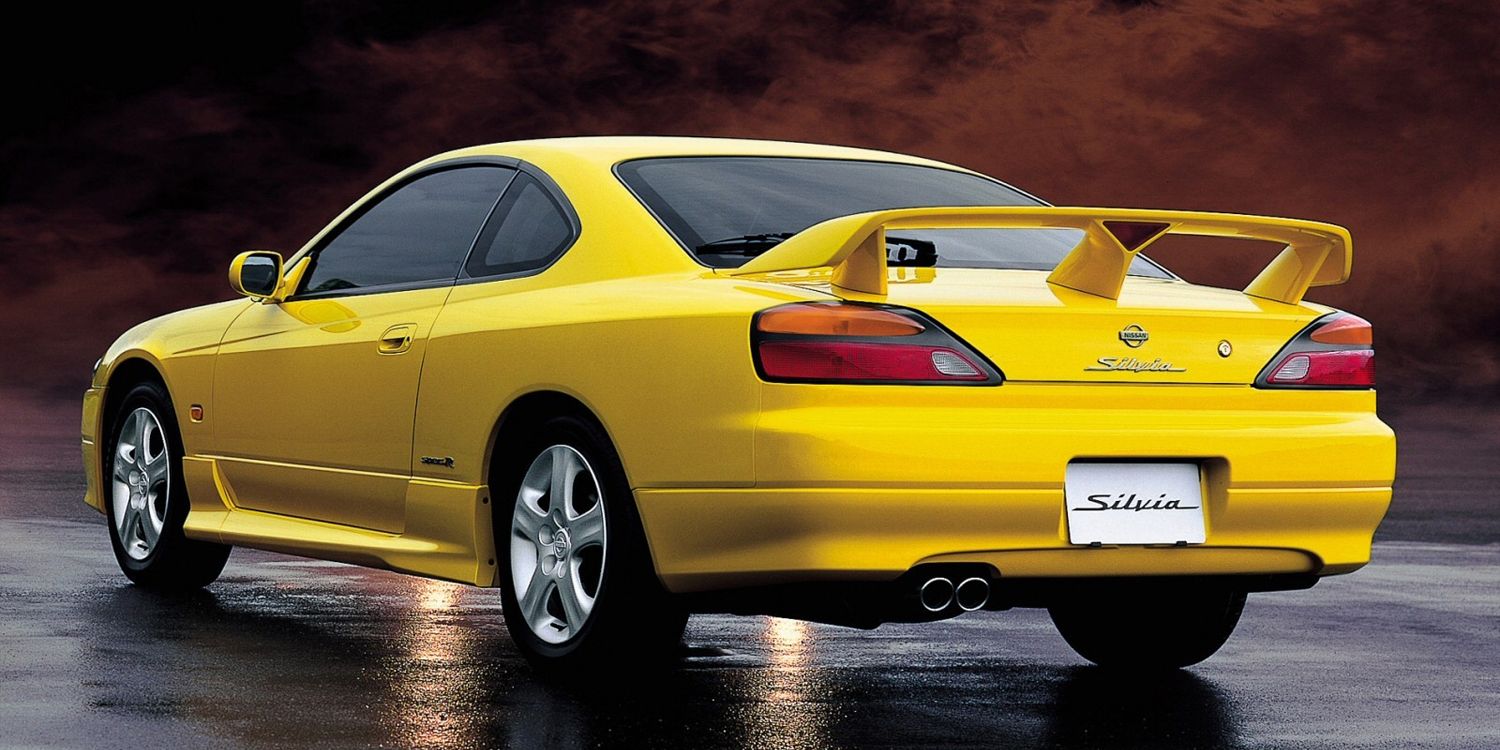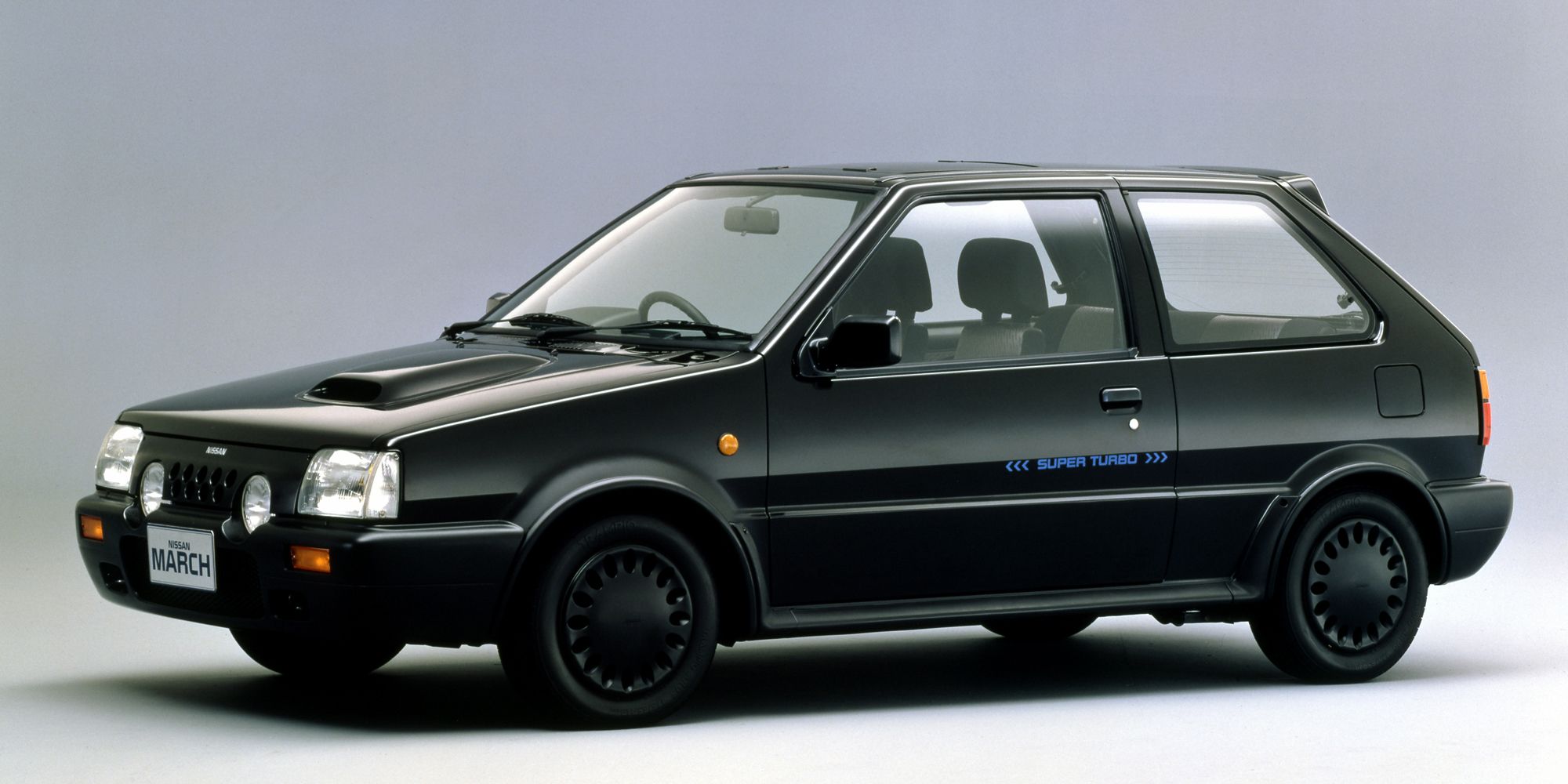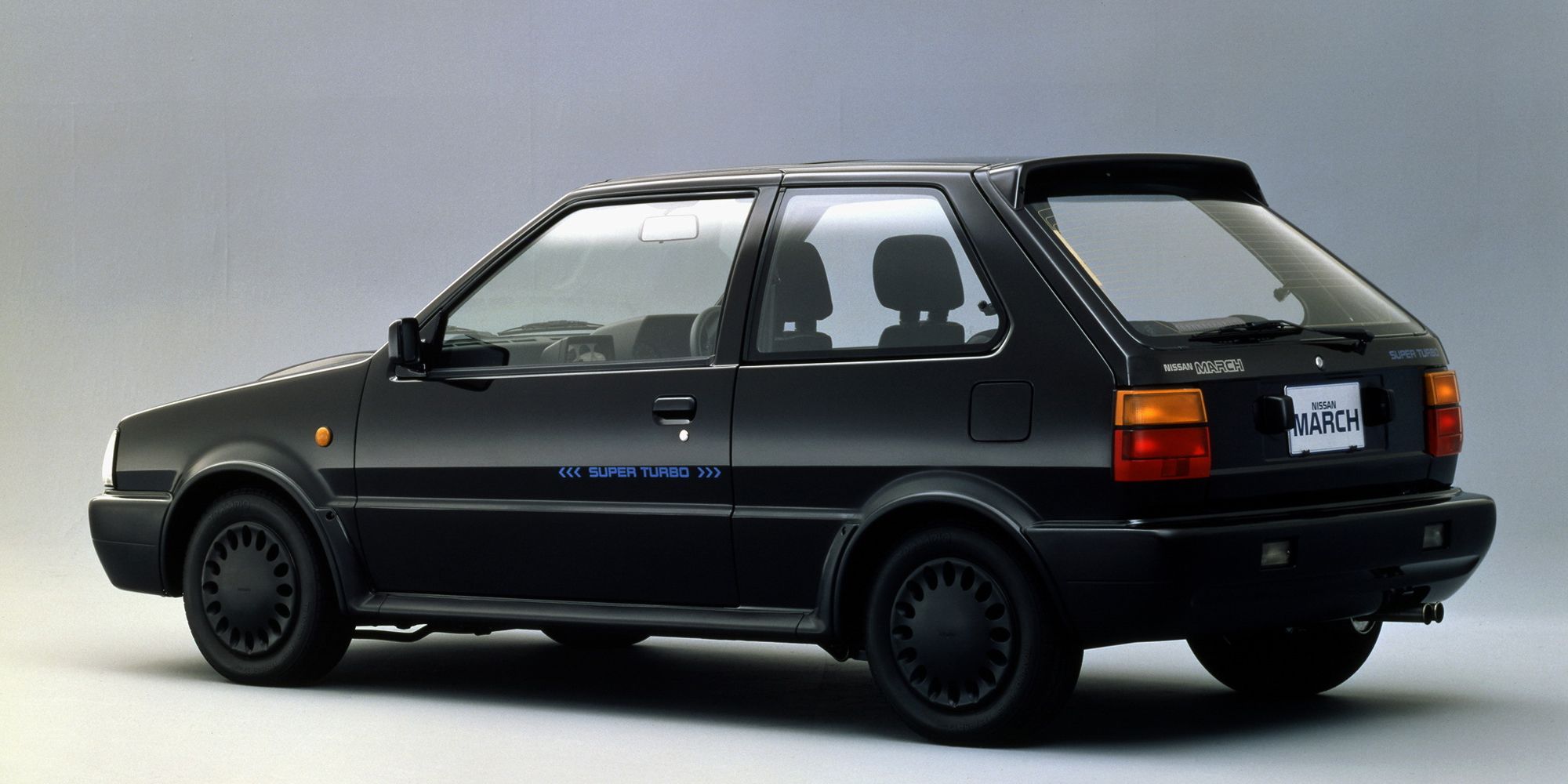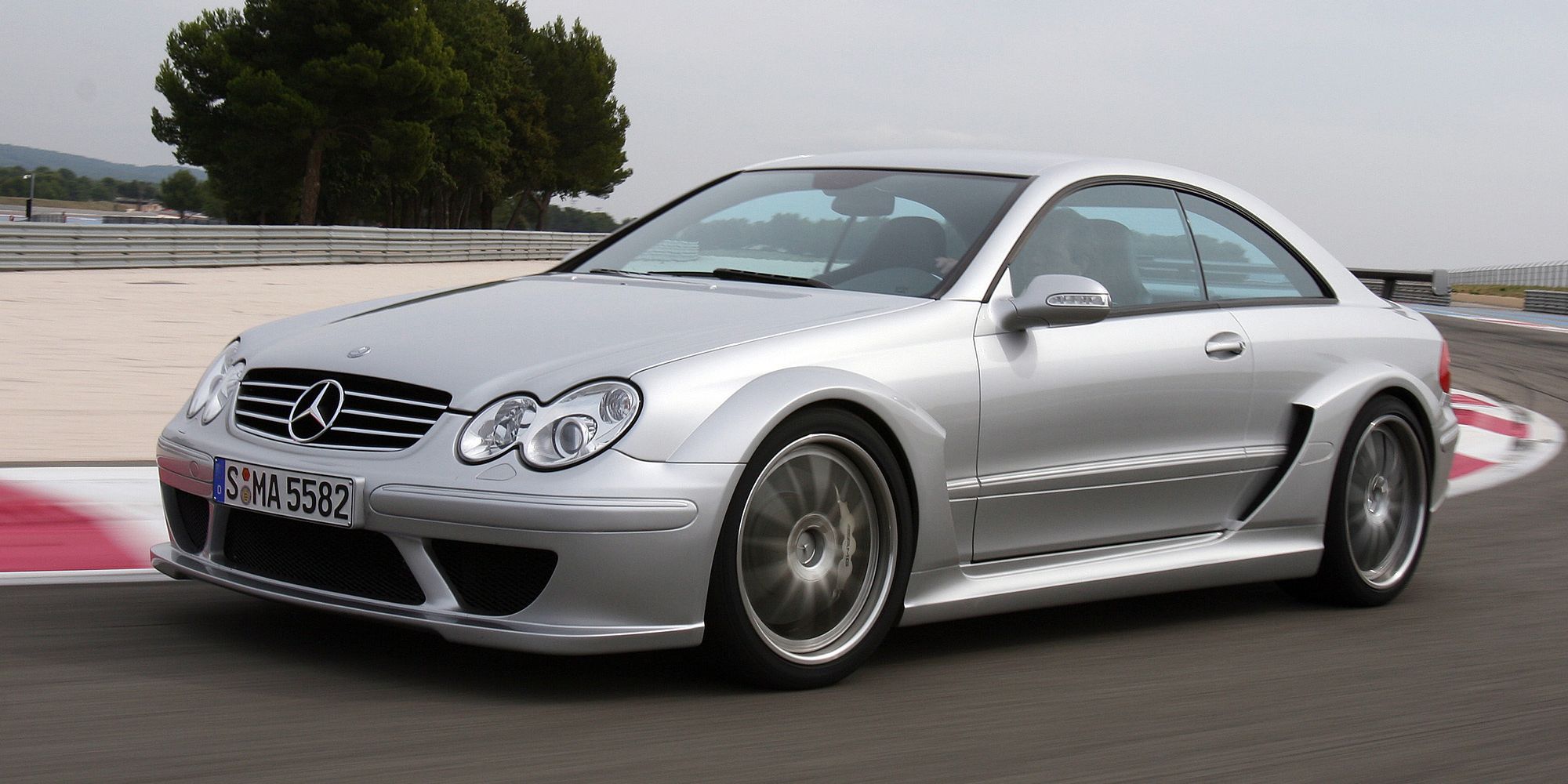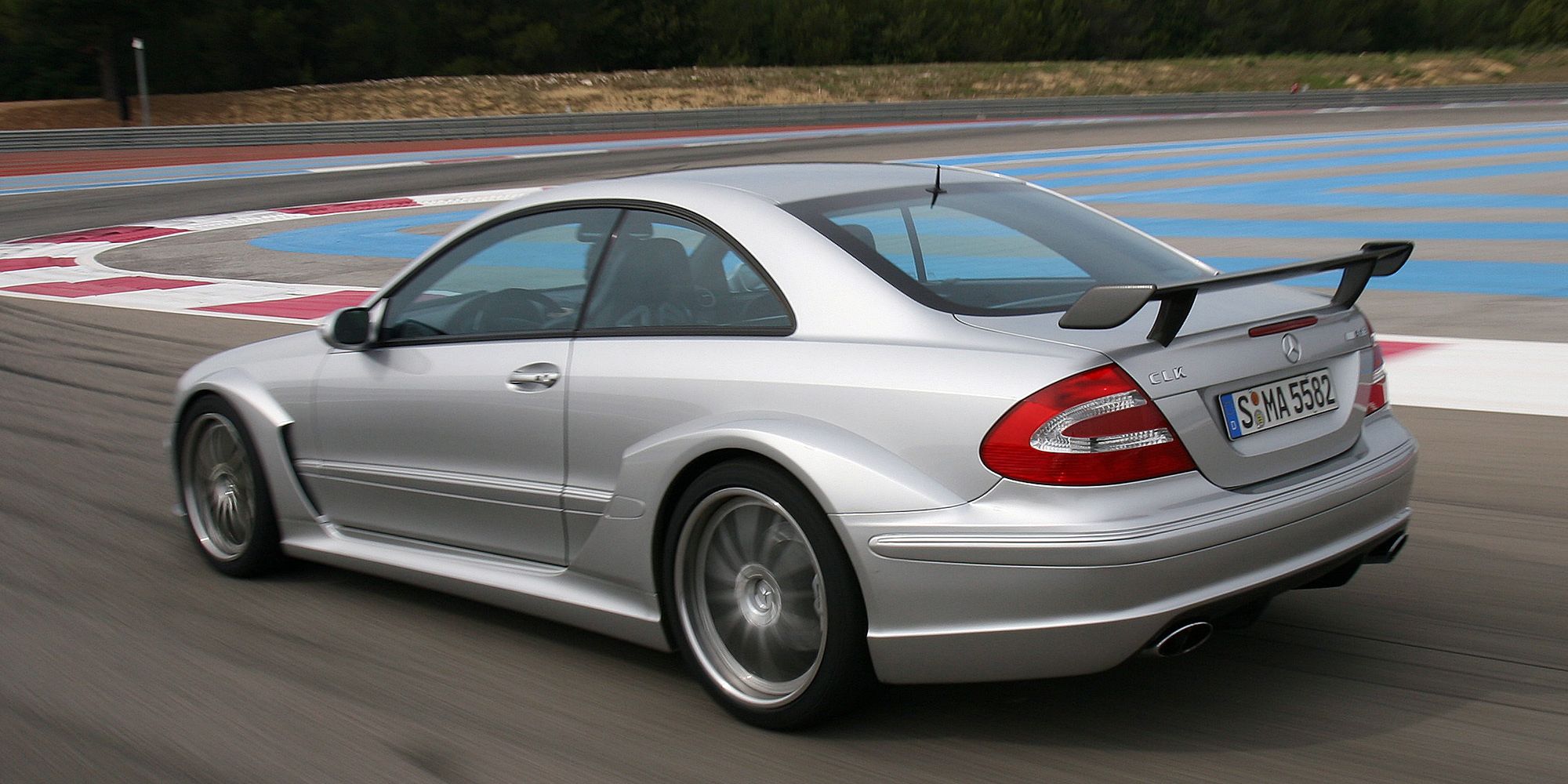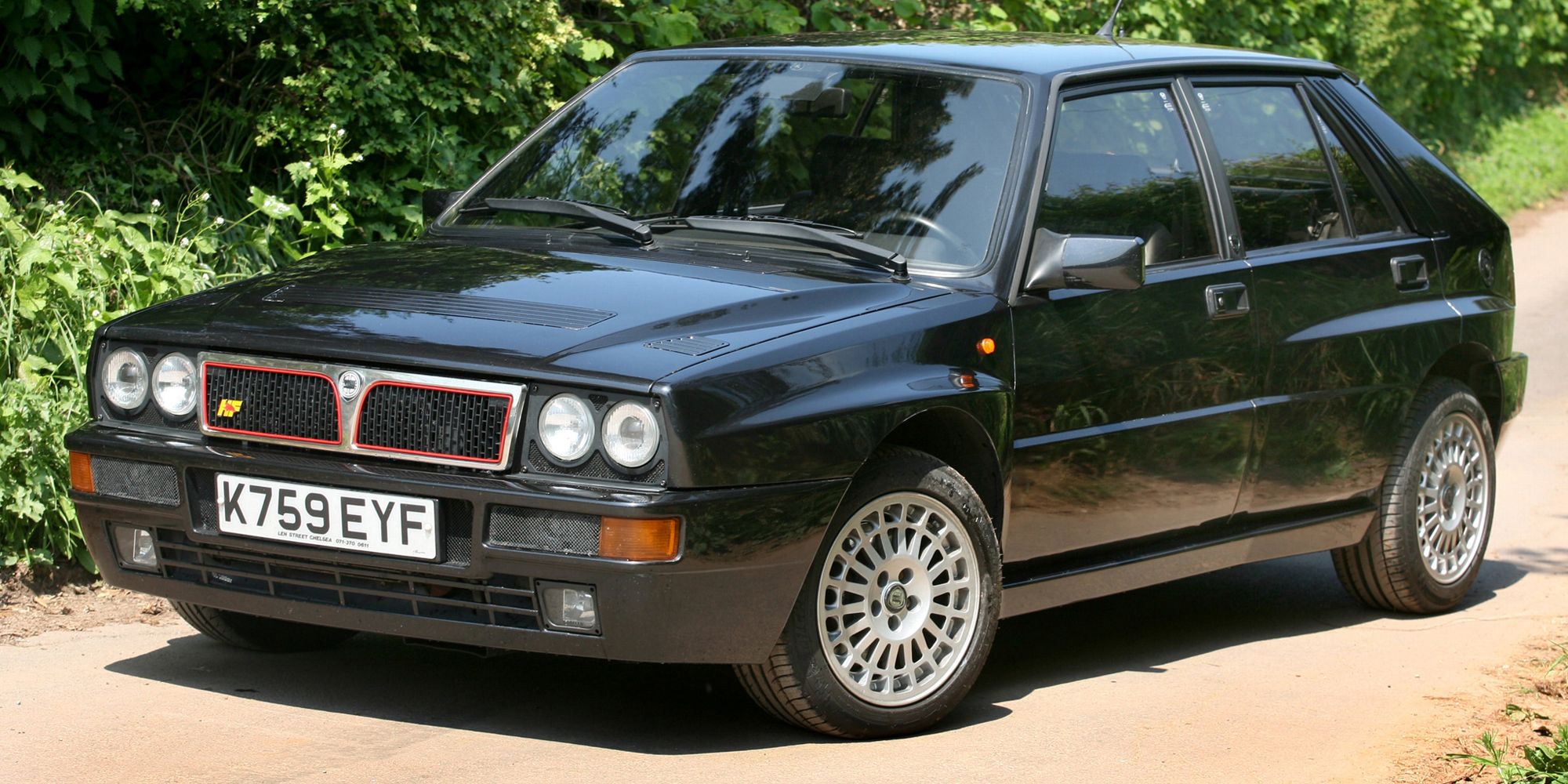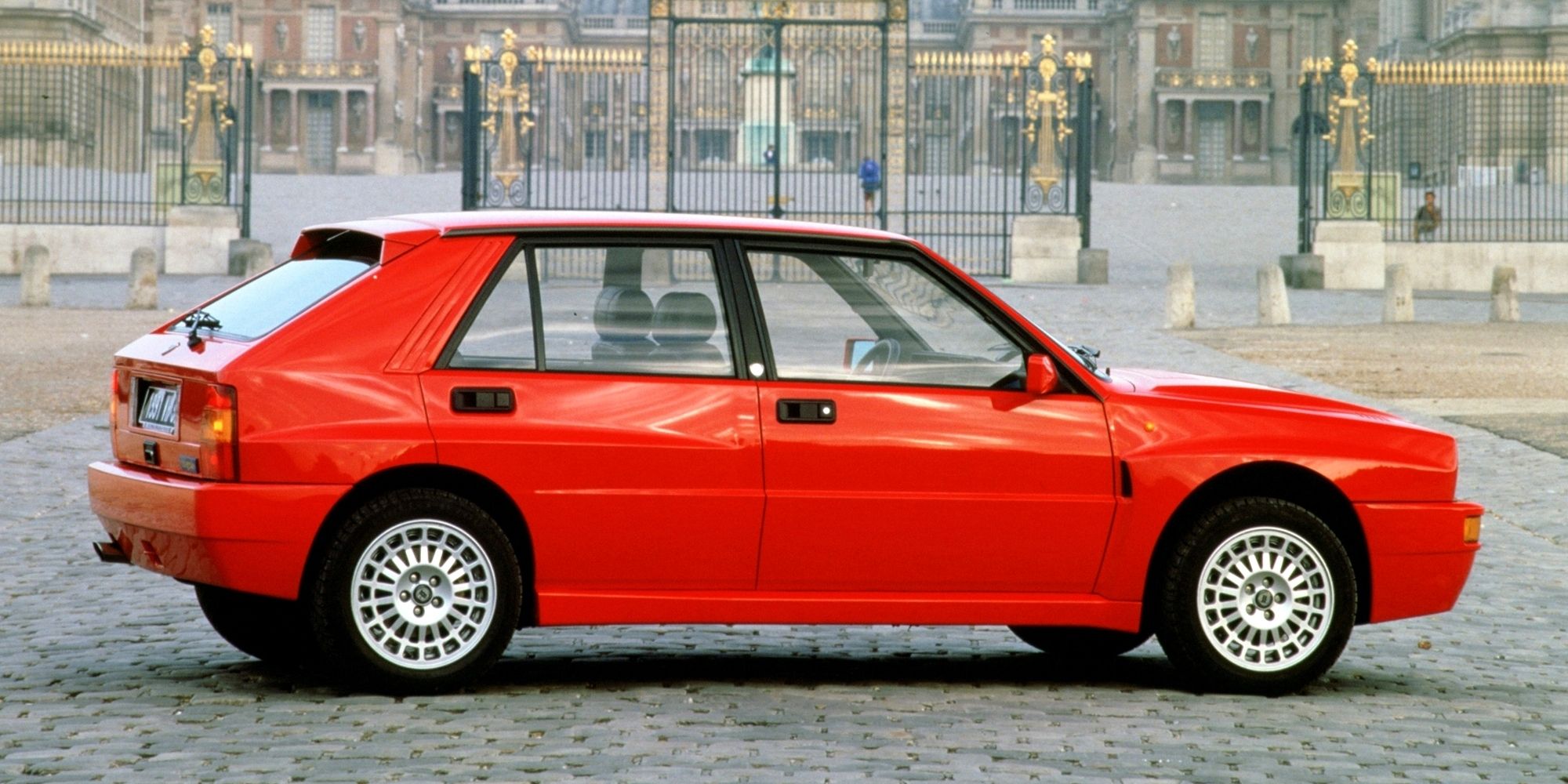Performance cars are awesome. No matter what your tastes are as a car enthusiast, we can all agree that performance cars are an integral part of being a lover of anything with four wheels. Over the past century or more, we have been bestowed with some truly epic sports cars.
North America has had its fair share of very important performance cars, including all the Camaros, Corvettes, and Mustangs, as well as the brilliant Ford GT and cars like the Hennessey Venom GT, but also some blunders. Elsewhere in the world, there were tons of awesome performance cars too, with one major caveat; none of them were sold in North America.
11 Opel Lotus Omega/Vauxhall Lotus Omega
One of the biggest rulebreakers in automotive history, the Lotus Carlton, also called the Lotus Omega, was a performance sedan based on the humble Opel Omega (Vauxhall Carlton in the UK) and it was absolutely insane. Lotus modified the 3.6 liter I6 that came in the regular Carlton by attaching twin turbochargers, resulting in an incredible 381 hp.
To put that into context, the Audi RS2 Avant, which arrived two years after the Carlton was discontinued, only made 315. The Carlton also had one major distinction from its main competitors; the top speed wasn't limited. The UK police famously initiated a campaign to ban the Carlton from sale because one was used as a crime getaway car that they simply could not keep up with, but it didn't go through. That's how insane the Lotus Carlton was.
10 Peugeot 205 GTI
Back in the 1970s, VW introduced the original Golf GTI, and it was a total revolution in the performance car world. No one thought that this new segment called hot hatchbacks could possibly get any better than the Golf GTI. But, in 1984, that's exactly what happened.
Peugeot, which recently got a massive logo overhaul, threw its hat into the hot hatchback ring with the 205 GTI, a beefed-up version of their compact family car, the 205. Originally launched with a 1.6-liter N/A 4-cylinder, which became a 1.9 in 1986, the 205 GTI is one of the finest handling hot hatchbacks ever made. It was also pretty fast, with the 1.9-liter engine putting down a considerable 126 hp. Not bad in a car that weighs in the neighborhood of 1,800 lbs.
9 BMW M5 Touring (E34)
The E34 was the second generation BMW M5, right after the wonderful E28. Based on the E34 5 Series, it arrived in 1988 and was sold until 1995 in most of the world. BMW brought over the E34 M5 to the United States for only a couple of model years, just to see how big the interest would be in an M car.
The E34 really is one of the best of the breed. It was the last hand-built BMW, and the I6 engine sounds incredible, and it gives this car a personality that simply couldn't be matched. It was also the penultimate M5 to come exclusively with a manual transmission. Unfortunately, North America missed out on the coolest version E34 M5; the Touring station wagon version, one of only two times in history that the M5 has been offered as a wagon.
8 Volkswagen Passat R36
Nowadays, Volkswagen is so serious and so dedicated to becoming an electric vehicle best-seller, they even pulled a ridiculous April Fools' prank claiming that they'll be rebranding to "Voltswagen" in the United States. 15 years ago, however, Volkswagen was totally different.
The 2000s were a truly insane time for VW, as they made cars that were bordering on perplexing and weird. The Passat W8, the Touareg V10 TDI, the Phaeton, and all the rest of them. But, they also stuck a 3.6-liter version of their narrow-angle V6 into the Passat, resulting in the Passat R36. It produced 296 hp, sending the beefed-up Passat to 60 in less than 6 seconds, all while the engine howls away with the magnificent VR6 sound.
7 TVR Sagaris
Arriving during the absolutely insane Smolensky era of TVR, the Sagaris was introduced to the world in 2006. It's safe to assume that it was the most ridiculously insane-looking car of the 2000s, with styling gems such as the slats on the hood, the glass rear wing, and the exhausts which were mounted perpendicular to the road.
Like most other TVRs at the time, the Sagaris used the TVR Speed Six engine, a 4.0-liter naturally aspirated I6 with 400 hp. Thanks to the fiberglass construction, with a 0-60 time of less than 4 seconds and a claimed top speed of 180 mph. It was also a TVR in many other ways; chameleon paint was a factory option, you had to press a button on the dashboard to open the doors, there was no A/C, airbags, or ABS, and it might even spontaneously catch fire.
6 Mazda Familia/323 GT-R
In the 1980s and 1990s, the hot hatchback market was fairly normal in most of the world. Most hot hatches were FWD, sometimes RWD, and they produced fairly balanced horsepower numbers. In Japan, however, it was a totally different story.
Mazda wanted to take their little Familia hatchback, known as the 323 elsewhere, rallying. So, they devised a homologated road car called the GT-R, and it was absolutely insane by 1990s standards. A turbocharged 1.8-liter four-cylinder put down 210 hp, which was sent to all four wheels through a 5-speed manual. The GT-R also featured significant upgrades just about everywhere else, including on the outside, so it's pretty easy to tell apart from a regular 323.
5 Porsche 911 Carrera RS 3.619 (964)
Many would agree that the Porsche 911 is an undisputed king of sports cars. It's amazing how Porsche engineers went about with this strange machine; they stubbornly keep the engine in the rear and yet successfully engineered their way around the stability problems from the earlier cars.
The 964 911 was introduced in 1989, and it was the second to last 911 generation to use an air-cooled engine. As usual with a 911, tons of different versions were available, but none of them were quite as visceral and as raw as the Carrera RS 3.8. It was an ultra-limited production, ultra-lightweight, no-frills version of the 964, with only 300 units built only for the European market. With 296 hp and the complete omission of mod cons, it was a properly thrilling car to drive.
4 Nissan Silvia Spec R Aero (S15)
The Japanese sports car market in North America was thriving by the 1990s, so it only made sense that Nissan brought over their S-chassis to the continent as well. The earlier, more obscure versions of the S-chassis also made it, but things really took off with the S13 generation.
Nissan also sold the S14 generation in North America as the 240SX, and pretty much all of them were modified for drifting, or crashed in some manner. But then, something very perplexing happened; when the S15 Silvia came along in 1999, Nissan skipped the North American market. It's a shame because the S15 was the last of the breed, and the most powerful versions made around 250 hp.
3 Nissan March Super Turbo
In Japan, if you wanted to buy a Nissan that was one step up from a kei car offering, you got a March, named the Micra elsewhere in the world. The older generations of the Micra/March now have a cult following, and most of them weren't that exciting or enthusiast-focused. Except the Super Turbo.
All of the usual grandma car stereotypes of the March were completely dissolved with the Super Turbo. Like the aforementioned Mazda Familia GT-R, the Super Turbo was a homologation special rally car with a rather insane powertrain; it used a 1.0 liter 4-cylinder engine which was turbocharged and supercharged, giving 110 hp and a 0-60 time of 7.7 seconds. It remains the most powerful Nissan Micra in the brand's history.
2 Mercedes-Benz CLK AMG DTM
During the 2000s, Mercedes-Benz was absolutely obliterating the DTM circuit with the CLK race car. To celebrate the victory, they launched a very limited production high-performance version of the CLK in 2004, called the CLK DTM AMG.
That's a lot of letters, but then this is a lot of car. For starters, it has one of the most insane body kits ever fitted to a production car, with hugely flared fenders, massive bumpers, and that giant carbon-fiber rear wing. Power came from a supercharged 5.4-liter V8 with 582 hp and 590 lb/ft of torque. Only 100 coupes and 80 convertibles were ever built, in 2004 and 2006, respectively, and they were exclusive to the European market only.
1 Lancia Delta HF Integrale Evoluzione
When it comes to rally cars, there are few brands and few cars out there that have a story as amazing as the Lancia Delta HF Integrale Evoluzione. Aside from the fact that Lancia won the championship in 1983 with an RWD car, the Delta was the real star of the show.
Between 1987 and 1992, the Delta won six consecutive constructors' championships, making it one of the most successful rally cars in all of history, and that's not counting the bespoke Delta S4 that competed in Group B before it was banned. As a result, the Integrale Evo has earned its place in the automotive history books, and prices are shooting up.

